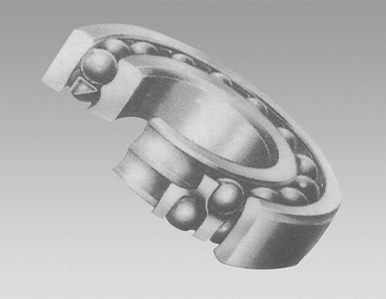
Nov . 18, 2024 11:15 Back to list
6309 bearing price
Understanding the Price Dynamics of the 6309 Bearing
In the realm of mechanical engineering and manufacturing, bearings play a pivotal role in ensuring smooth and efficient operation of machines. Among the myriad of bearing types available, the 6309 bearing stands out due to its versatile applications and robust performance. As industries continue to evolve and demand increases for high-quality components, understanding the price dynamics of the 6309 bearing becomes essential for manufacturers, suppliers, and end-users alike.
What is a 6309 Bearing?
The 6309 bearing is part of the deep groove ball bearing family, known for its ability to accommodate radial and axial loads in both directions. This bearing type is characterized by a deep raceway that allows for high-speed operation, making it suitable for various applications across different sectors, including automotive, aerospace, and industrial machinery. The 6309 designation refers to its dimensions, specifically a bore diameter of 45 mm, an outer diameter of 100 mm, and a width of 25 mm, providing a balance of size and load-bearing capacity.
Factors Affecting the Price of 6309 Bearings
1. Material Quality The primary materials used in manufacturing bearings significantly influence their price. High-quality steels, such as bearing steel (GCr15), stainless steel, or ceramic, offer better performance and longevity but also come at a higher cost. Manufacturers that invest in premium materials often set a higher price point for their 6309 bearings.
2. Manufacturing Process The production technique plays a crucial role in determining the bearing's quality and reliability. Advanced manufacturing processes, such as heat treatment, precision grinding, and automated assembly, enhance the performance characteristics of a 6309 bearing. As a result, bearings produced through these methods may command a premium price due to the associated costs in technology and labor.
6309 bearing price

3. Brand Reputation Established brands with a proven track record of quality and reliability often charge higher prices for their bearings. Customers are more likely to trust products from well-known manufacturers, and this trust can justify a higher price tag. In contrast, lesser-known brands typically price their products lower to attract buyers, although this may come with trade-offs in quality.
4. Market Demand and Supply Like any other market commodity, the price of the 6309 bearing is influenced by supply and demand dynamics. A surge in demand—possibly due to increased industrial activity or technological advancements—can drive prices up. Conversely, an oversupply or reduced demand may lead to price reductions. Economic factors, such as fluctuations in raw material costs and trade tariffs, can also impact overall pricing.
5. Distribution Channels The pathway through which the bearing reaches the consumer affects its final price as well. Often, purchasing directly from manufacturers can be more cost-effective than buying through distributors or retailers, who may add their mark-up to cover operational costs. For bulk purchases, negotiations and direct supply agreements can lead to significant savings.
Price Range and Considerations
Generally, the price of a 6309 bearing can range from $10 to $50, depending on the above factors. It is crucial for consumers to consider their specific application requirements and balance them against cost. While a lower-priced bearing may seem appealing, it is essential to assess the bearing's performance and longevity, as cheaper options may lead to failure and increased maintenance costs down the line.
Conclusion
The price of the 6309 bearing is influenced by a complex interplay of material quality, manufacturing processes, brand reputation, and market dynamics. Buyers must carefully assess their needs and weigh the benefits of investing in high-quality bearings against potential cost savings from cheaper alternatives. Understanding these price dynamics is key to making informed purchasing decisions, ultimately impacting the performance and reliability of the machinery in which these bearings are used. As industries continue to grow and advance, staying informed about such components will remain crucial for success in the competitive landscape of mechanical engineering.
Latest news
-
Premium Deep Groove Ball Bearings | High Speed & Reliability
NewsAug.29,2025
-
Durable Scaffolding Clamps - Secure & Reliable Tube Connectors
NewsAug.28,2025
-
Common Failures in Thrust Ball Bearings and Solutions
NewsAug.22,2025
-
How Tapered Roller Bearings Can Take Shock Loads
NewsAug.22,2025
-
Angular Bearings in High-Precision Spindles
NewsAug.22,2025
-
The Impact of Misalignment on Cylindrical Roller Bearing Performance
NewsAug.22,2025
